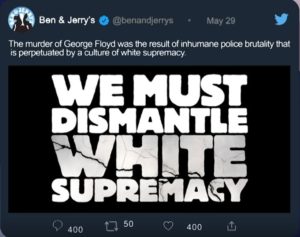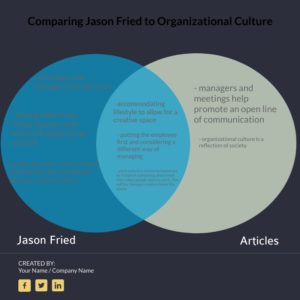Challenging the dialogic promise: how Ben & Jerry’s support for Black Lives Matter fosters dissensus on social media
In summary:
This article’s purpose is to advance dialogic theory by presenting an agonistic orientation toward dialogue, concluding that public relations research is enriched by a postmodern approach, recognizing dissensus as an important concept and consequence when organizations advocate on behalf of contested political and social issues. Erica Ciszek (PhD Communication & Society, University of Oregon School of Journalism & Communication and Assistant Professor, Stan School of Advertising and Public Relations) & Nneka Logan (PhD Georgia State University and Associate Professor, Department of Communication, Virginia Polytech University) ascertain how Ben & Jerry’s social media support for Black Lives Matter functions as an ideological reservoir for a variety of competing perspectives about race in the United States and the role of a corporation in these conversations. Though they are challenging consensus-driven orientations of dialogue within digital landscapes by analyzing Ben & Jerry’s support of the Black Lives Matter movement and the subsequent public response, the findings of this study elucidate the utility and implications in a public relations context in a company’s communication in corporate political advocacy. Situating value-drive over profit imperative in organizational life. I agree that by maintaining that public relations needs to continue to theorize how dialogue contextualizes these issues, it’s worth considering an instance in which an organization takes relational risks by engaging in corporate political advocacy.
Note: This article was Received 01 Dec 2017, Accepted 18 Jun 2018, Published online: 08 Aug 2018. I include these dates, as it seems important and powerful to note on Ben & Jerry’s behalf, that this was not in response to the protests going on today in 2020, but rather separate, yet all too similar, issues four years ago!
On October 6, 2016 Ben & Jerry’s posted on their website not just that Black Lives Matter, but WHY black lives matter to them. They spoke out about how “Systemic and institutionalized racism are the defining civil rights and social justice issues of our time.”
They ask their customer base to join them in not being complicit. Illuminating a simple objective “to ensure justice-loving people act toward justice, with all evidence, and that we stand together and act from a place of power and love, rather than out of fear and anger.”
Ben & Jerry’s goes even further, educating their public on how systemic racism is real, within their own company website.
https://www.benjerry.com/whats-new/2016/systemic-racism-is-real
Today, in response to the murder of George Floyd, brands and companies are taking Ben & Jerry’s lead and speaking out against Racism, such as Nike and more effectively Viacom. However, Ben & Jerry’s seems to always go a step further with their alliship, advocacy and calls to action, with statements on Twitter such as:

Maybe it’s because they sell Ice cream that Ben & Jerry’s can speak out so openly regardless of possible stakeholder and public alienation, and without seemingly risking the life of their organization? Does what you sell, what business you are in, what kind of company you are, make a difference in the role you can have in corporate political advocacy? And that according to Ciszek & Logan, even while continuing to address that scholars have continually used dialogic principles to examine whether social media is dialogic, and the significance of three of the key areas to public relations theory and practice; how within digital landscapes, can there still be a mode of inquiry in line with critical theory, that is also concerned with the flow and play of power through public discourse?
Why this? While I couldn’t find information on how any minority employees at Ben & Jerry’s might feel going to work each day (as originally intended), and as a white person I can not even begin to assume anything about this; what I can say is that, Ben & Jerry’s has proven that it is possible for organizations to take relational risks by engaging in corporate political advocacy, regardless of dialogical theory, and I appreciate that they don’t let anything like that deter them.


